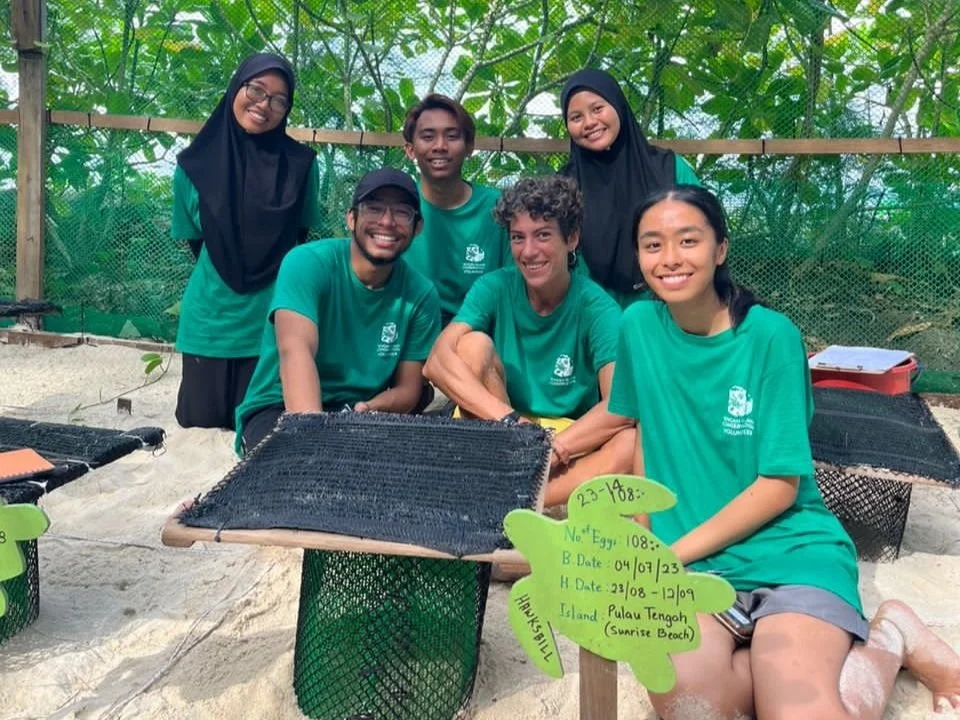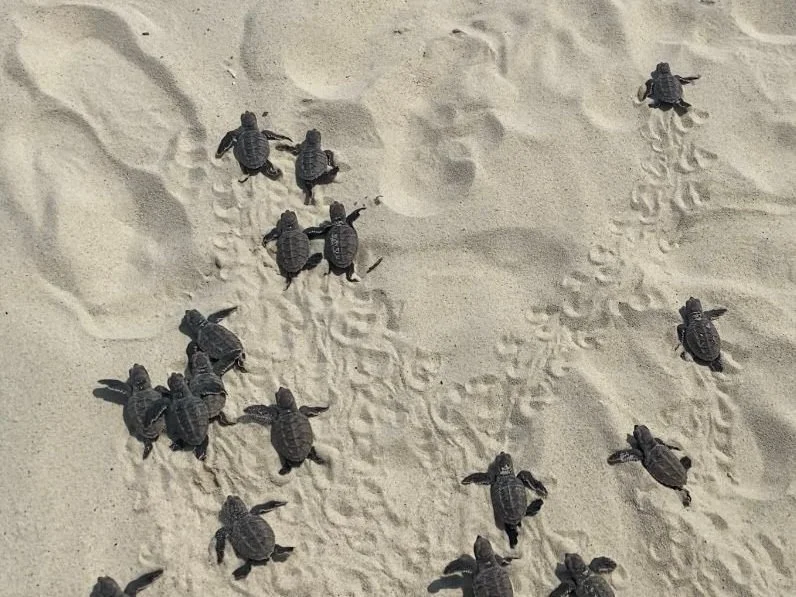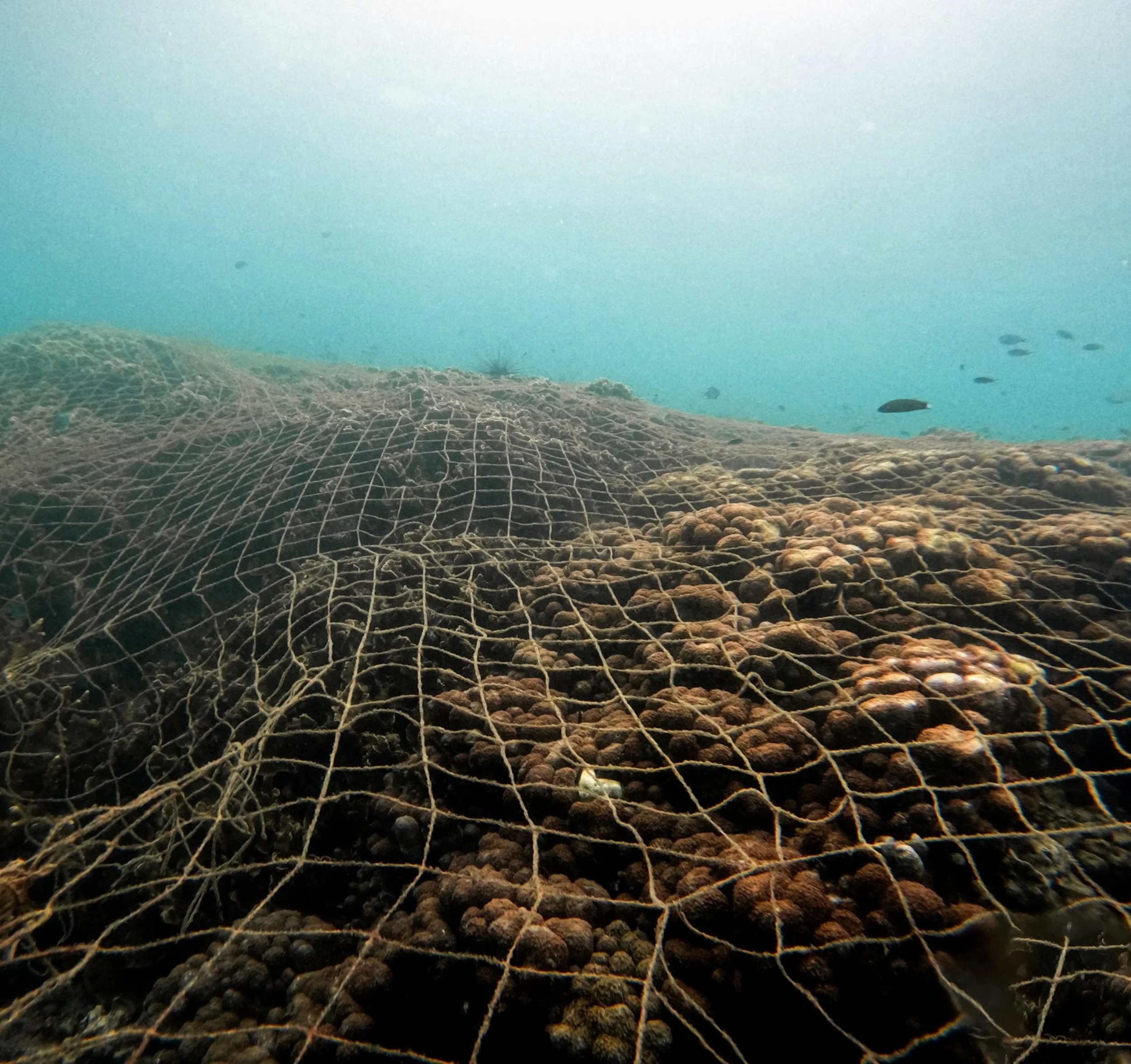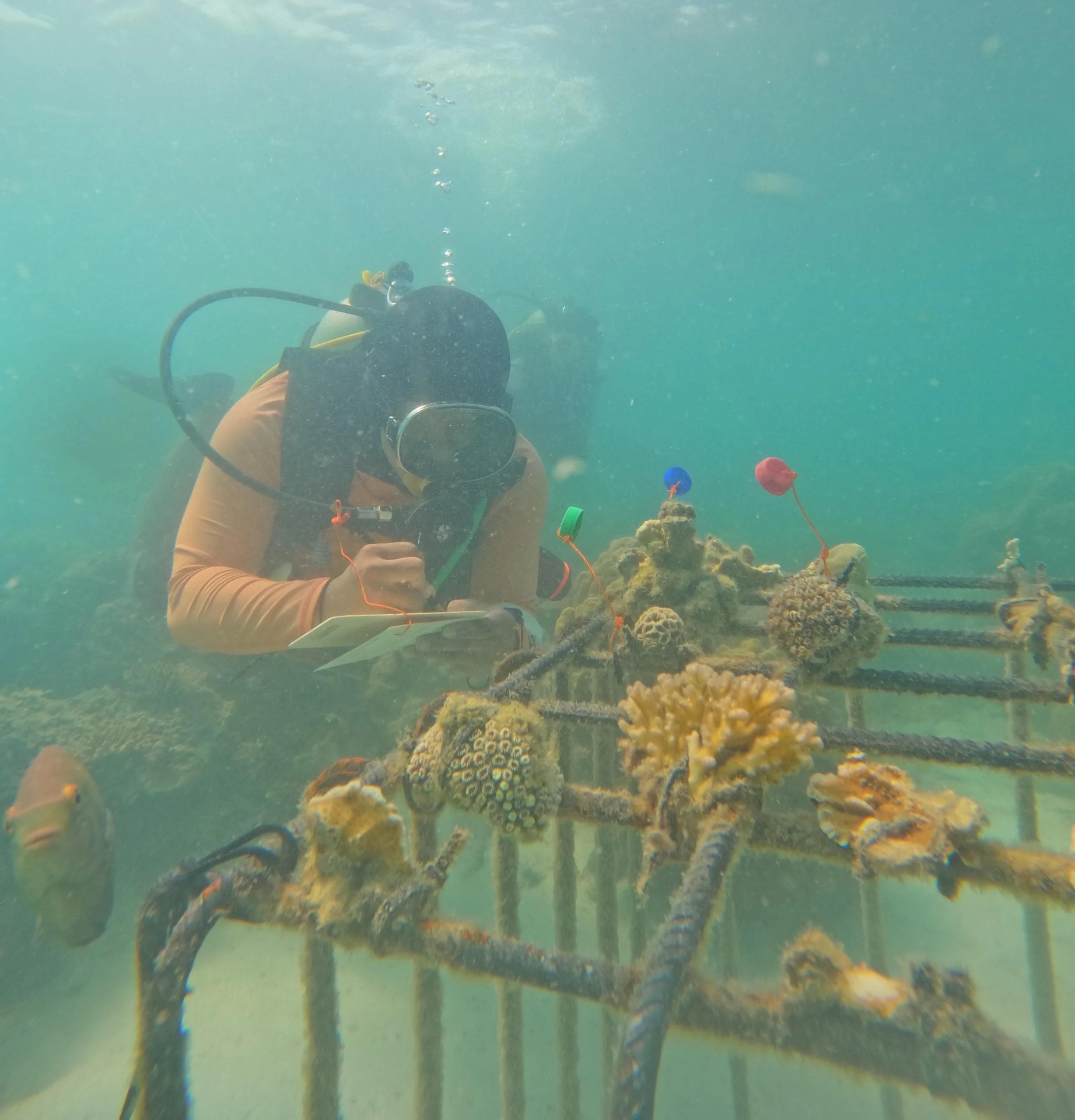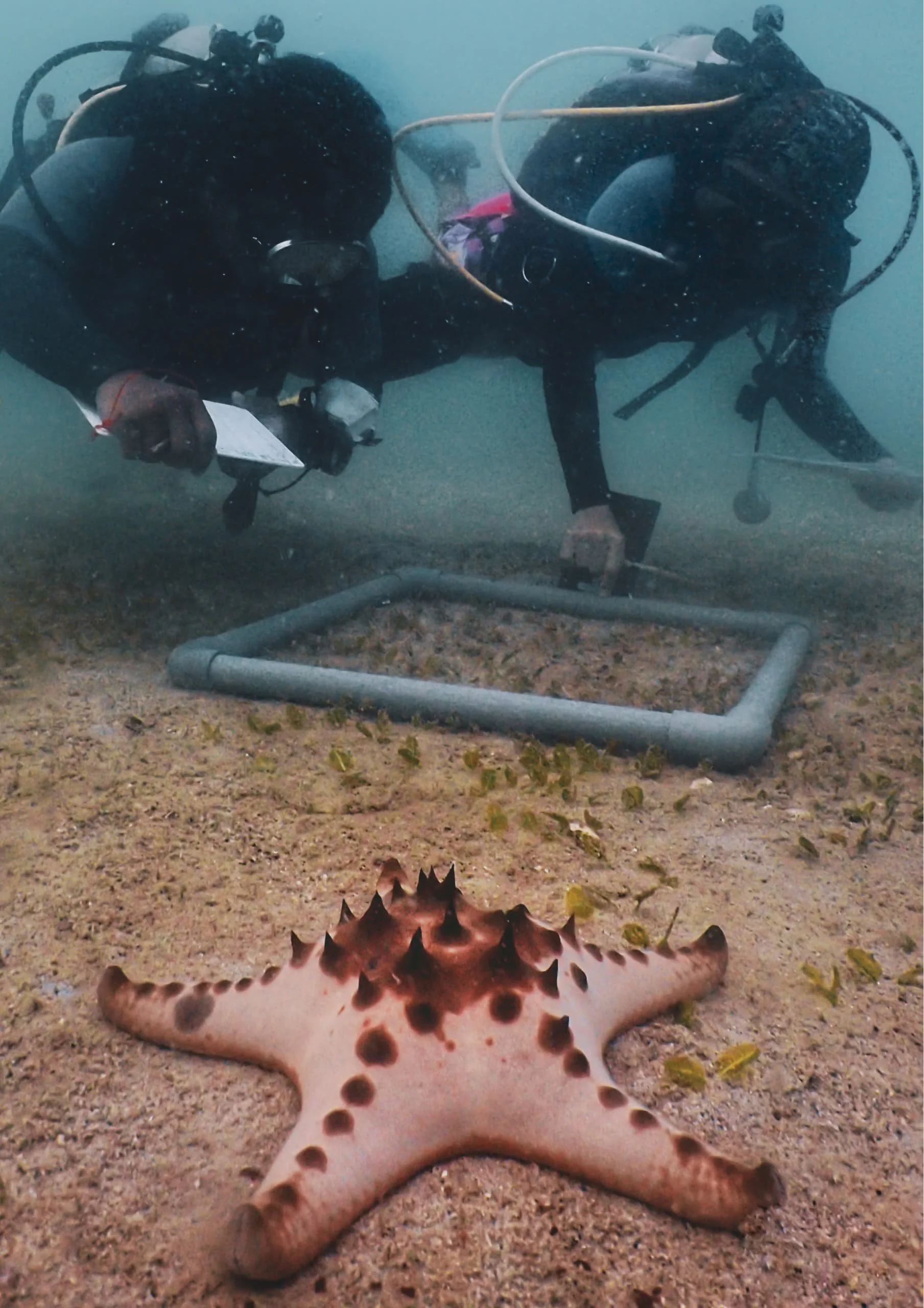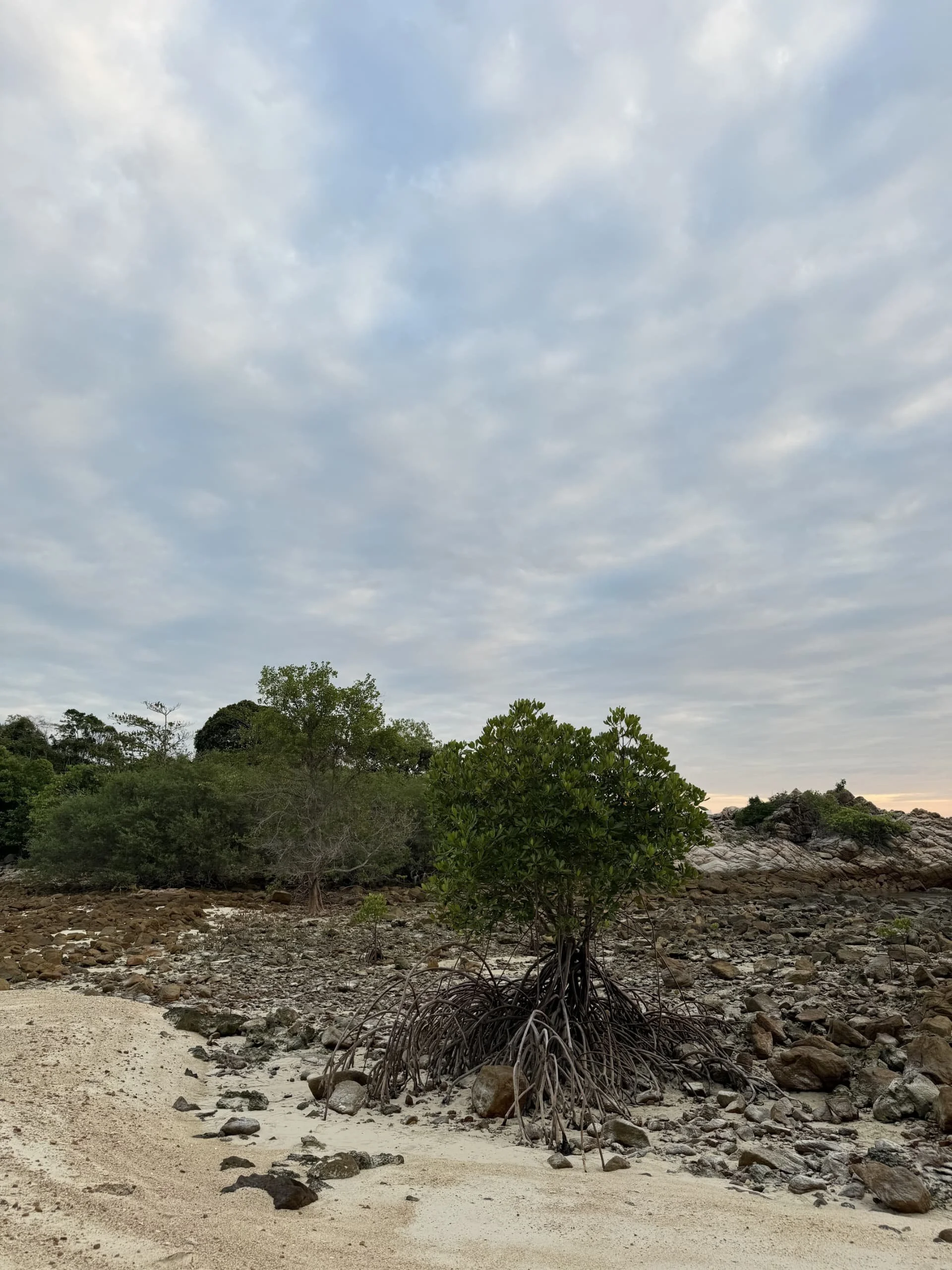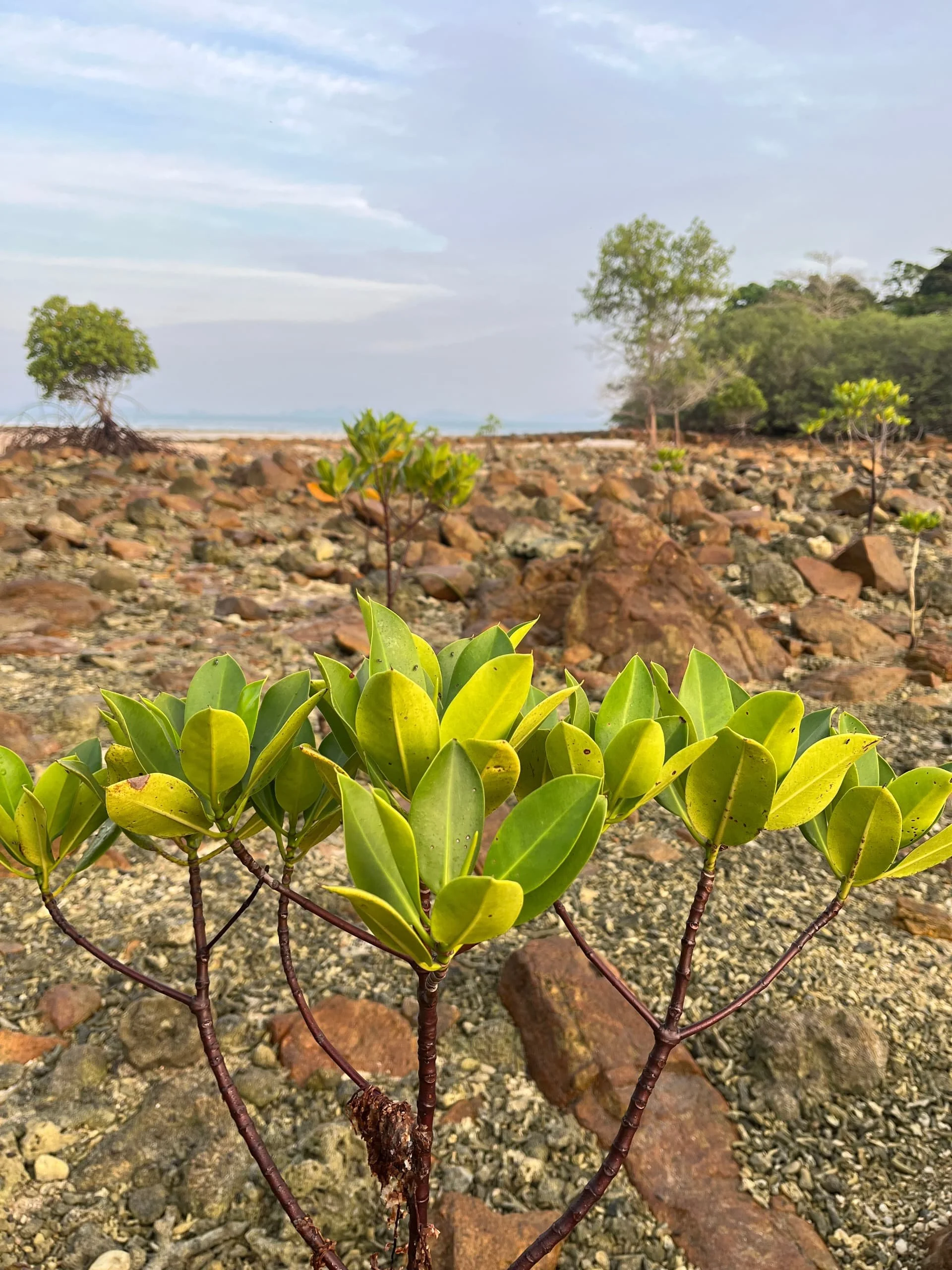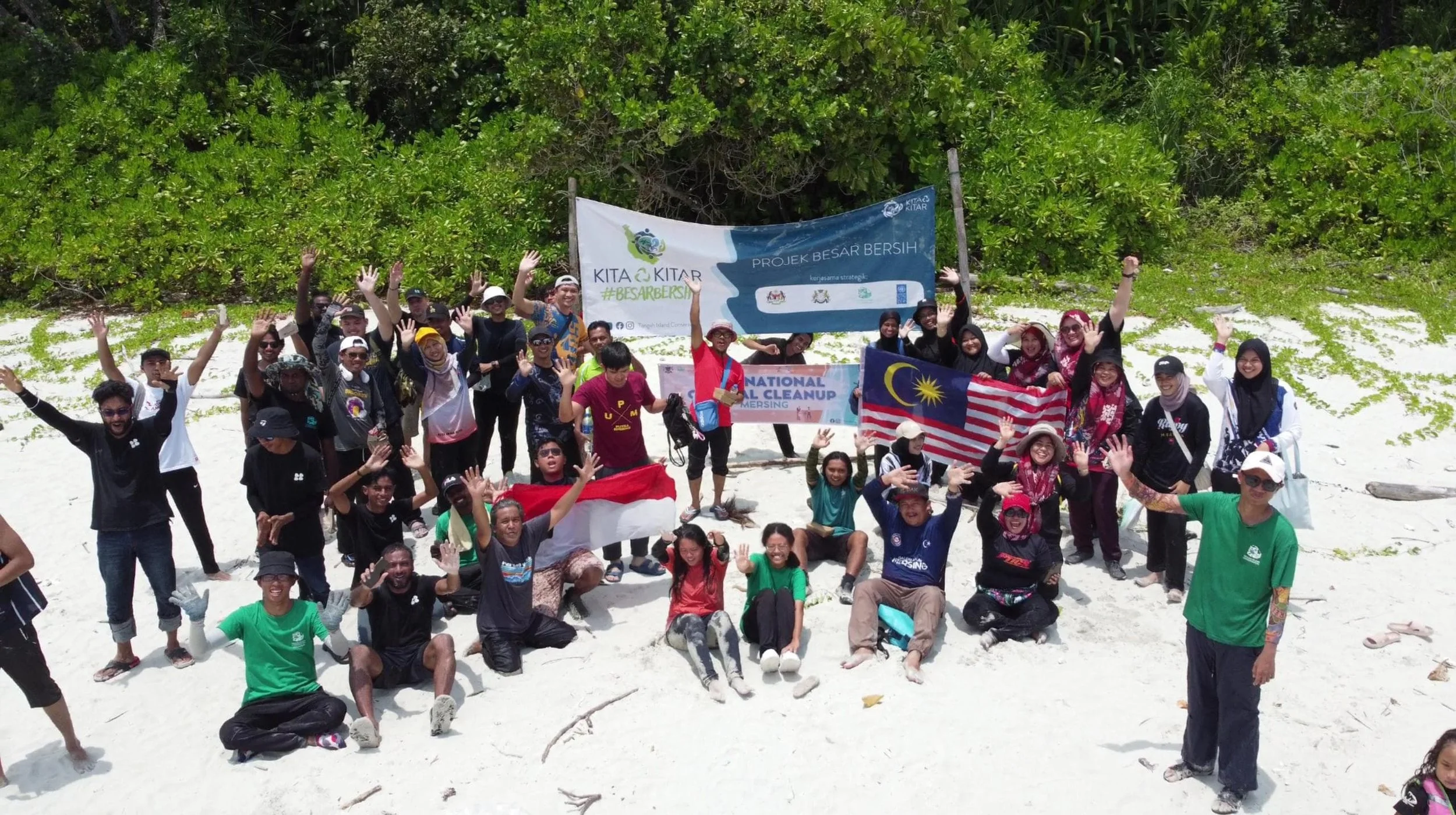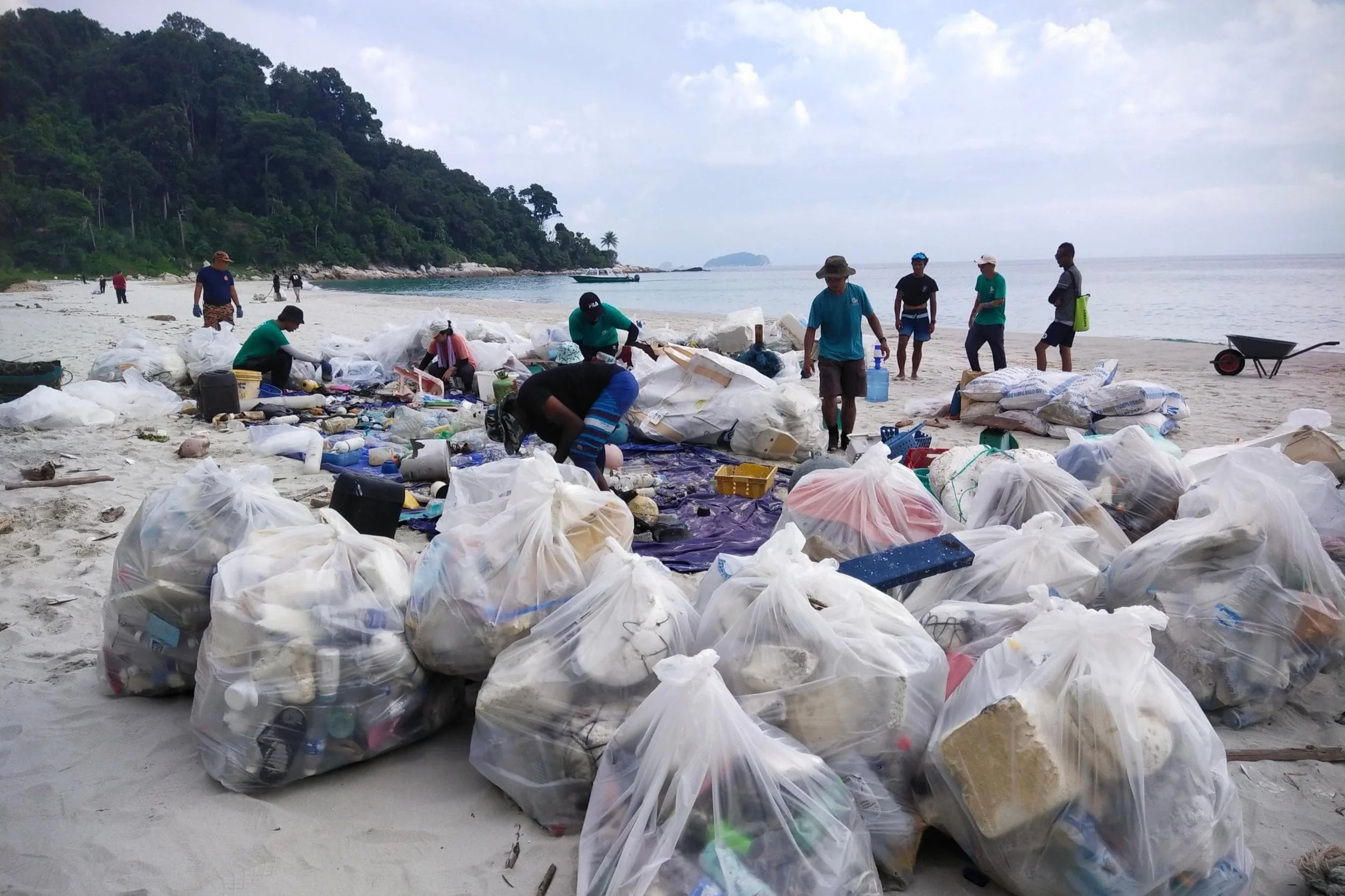sea turtle
We're excited to share the results of our sea turtle monitoring and hatchery management in the Johor Marine Park (JMP) and its six islands. Our dedicated team, including interns and volunteers, patrolled daily from March to October, documenting 64 sea turtle activities.
The hatchery secured 26 nests, protecting 17 Hawksbill and 9 Green turtle nests, achieving 74.92% hatching success rate. Unfortunately, 8 nests were poached.
In total, we successfully relocated 2,986 eggs to our Tunku Abdul Jalil Conservation Center (TAJCC) Hatchery in Pulau Tengah and safely incubated them, allowing for successful releases once they hatched.
dugong
dugong sightings
Dugongs were spotted in March 2018 and October 2024 where we found the trails in Pulau Tengah and Pulau Hujung.
We are working our best in monitoring this area to welcome more dugongs and other marine species.
coral Reef
monitoring
The collaborative efforts of TIC, DOF, TLSI, RCM, and Pulau Besar Community were clearly demonstrated in their tireless initiatives to eliminate ghost nets from the coral reefs. This collective action aims to uphold the sustainability of the reef ecosystem by tackling the significant threats.
rehabilitation
We are thrilled to the updates and development of our ongoing commitment to coral conservation and preservation from our recently established coral rehabilitation site at Junior Reef, Pulau Tengah in collaboration with various agencies.
This initiative was launched in response to a coral bleaching in June 2024, which simultaneously affected coral ecosystems in Pulau Redang and Pulau Tioman.
To address the bleaching’s aftermath, in August 2024, TIC deployed seven metal frames with the dedicated assistance of LUSH, TNB and TIC team members. These "corals of opportunity" consisted of live coral fragments collected from the surrounding rehabilitation area. The collection effort yielded a diverse range of coral fragments comprising 13 different genera. This rich diversity is essential for the overall resilience and sustainability of the coral ecosystem.
Following the deployment, our team diligently conducted monthly coral measurements and health checks. These activities were crucial for assessing the survival rate of the coral fragments and evaluating the effectiveness of the methods and materials employed in the rehabilitation process. Despite facing challenges such as rough sea conditions and poor visibility due to the onset of the northeast monsoon season, our team managed to monitor the site until October. The three-month observation period yielded encouraging results— all 174 coral fragments remained securely attached to the artificial structure, and only few showed signs of mortality.
As the sea conditions are anticipated to improve, and visibility becomes more favourable with the passing of the northeast monsoon season, our monitoring efforts will resume in 2025. This will allow our team to conduct in-depth dive monitoring, ensuring a comprehensive understanding of the ongoing rehabilitation progress.
seagrass
mapping and monitoring
This initiative involved three islands in the Besar islands cluster, encompassed eight survey sites, and a total of 24 dives, providing us with a better understanding of the dynamic nature of seagrass ecosystems in this region. Our surveys revealed the rich biodiversity of seagrass species and identified four distinct varieties: Halodule uninervis (HU), Halophila ovalis (HO), Cymodocea serrulata (CS), and Syrongidium isoetifolium (SI). This diversity contributes to the ecological resilience of the marine environment in these pristine waters.
mangrove
We started our initiative to plant more than 100 Rhizophora mucronata mangrove tress at Mangrove Island and Turle Beach. The two sites covers about 1.5km² plots of restoration area.
Mangrove trees help to buffer coastlines from severe weather and flooding as well as reducing sediment runoff which in turn helps to protect our coral reefs.
Indigenous Tree Nursery
As a result of continuous coastal erosion over the past years, our team created a Tree Nursery to allow the growth of sand-stabilizing species and to promote biodiversity.
Once matured, these trees will be replanted along our coastline to support the beaches against erosion caused by wave action and weather, whilst maintaining a healthy, indigenous and flourishing terrestrial environment.
The nursery houses 8 different species of trees - Indian Almond Tree (Terminalia catappa), Red Mangrove (Rhizophora mucronata), Sea Poison Tree (Barringtonia asiatica), Beach Cabbage (Scaevola taccada), Beach Calophyllum (Calophyllum inophyllum), Sea Hibiscus (Hibiscus tiliaceus), Nipa Palm (Nypa fruticans), and Sea Gardenia (Guettarda speciosa).
The mentioned trees do not represent the whole plant species on the island but rather only the species planted and nurtured in the TIC Indigenous Tree Nursery.
clean-up projects
underwater Clean-ups
In 2024, over 450kg of ghost nets were successfully removed from the reef, resulting in a total of 17 tonnes of such nets removed since 2018.
Our commitment to preventing the 'silent killer’ of marine animals becoming entangled in abandoned fishing gear has prompted our involvement in the ghost net removal program in Pulau Harimau. Collaborating with the Department of Fisheries Johor, Island Community, and various government and NGOs, we collectively contribute to the health and sustainability of our underwater ecosystems.
These achievements would not have been possible without the dedication of our volunteers and interns, the support of local communities, and the ongoing collaboration with partner organisations. As we move forward, we hope to continue working together to create a cleaner, healthier, and more sustainable environment for our community and future generations.
beach clean-ups
In 2024, our commitment to keeping our coastal areas clean led to the successful completion of 26 cleanup activities across six islands within the Johor Marine Park. Our weekly beach cleanup sessions with guests from Batu Batu Resort on Pulau Tengah have not only fostered environmental awareness with a wider audience but also facilitated hands-on participation in the conservation process.
The TIC team has achieved a significant milestone by removing a staggering 3,893 kg of marine debris in 2024 alone, This brings our cumulative total to an impressive 40 tonnes since the inception of our cleanup initiatives in 2018.
Fishing gear, including buoys, fish traps, rope, and nets, topped the list of items collected, totalling over 1.6 tonnes in 2024 and surpassing 17 tonnes since 2018. Addressing this issue is vital to minimizing the impact on marine life and habitats.
The team collected over 8,000 kilograms of plastic waste, encompassing plastic bottles, straws, lollipop sticks, toothbrushes, lighters, and plastic containers. Tackling plastic pollution remains a central focus of our cleanup endeavours.



